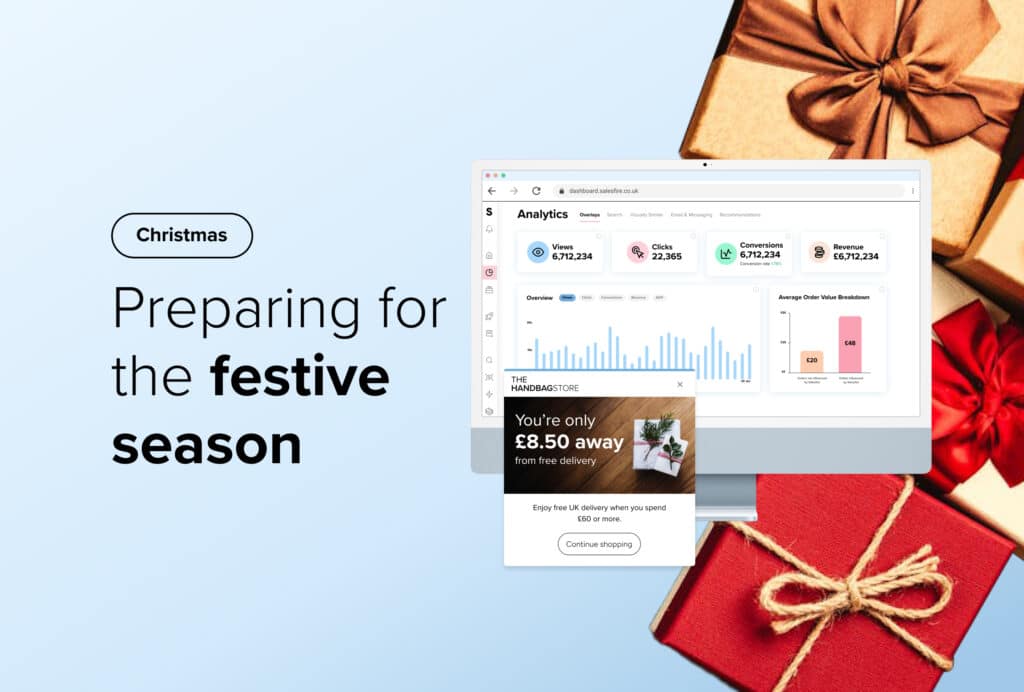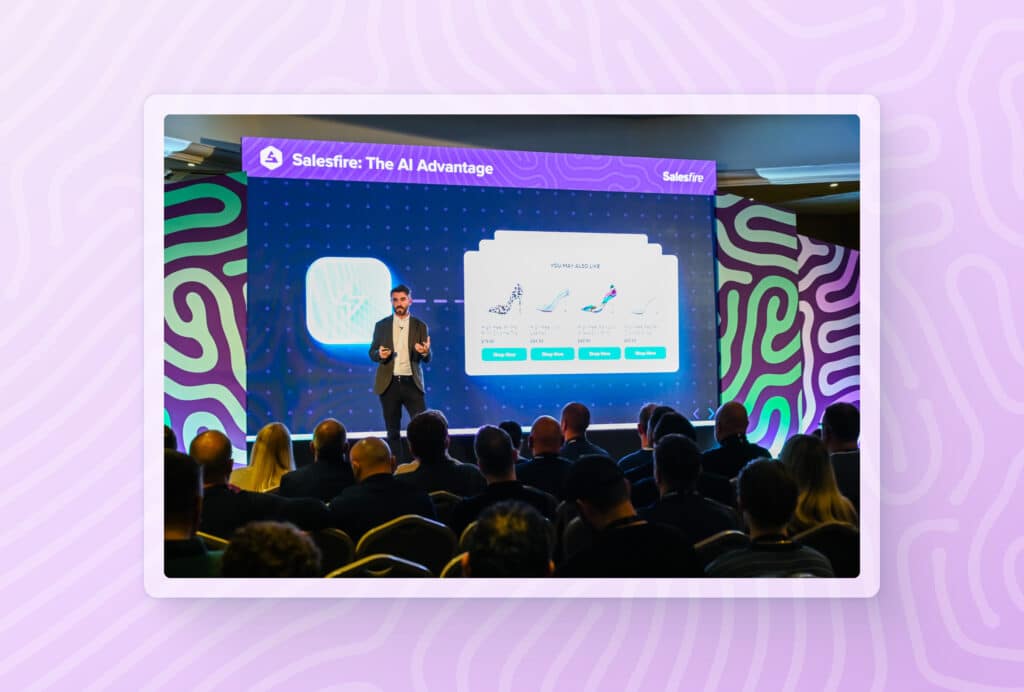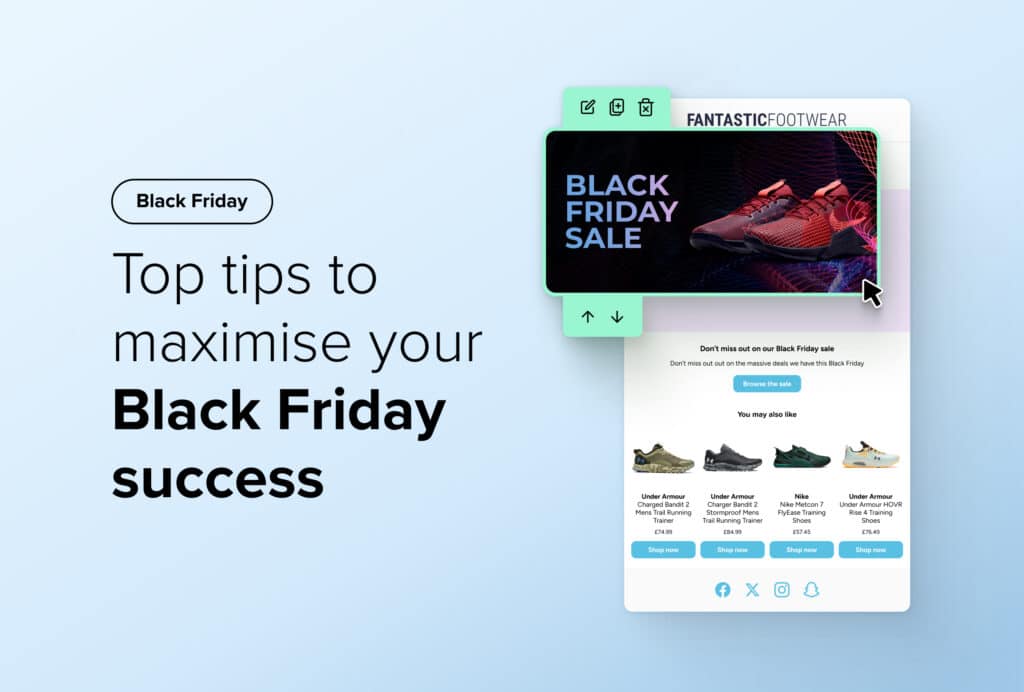Marketing to Millennials: How eCommerce Sites Can Sell More
By Courtney O'Riordan • Last updated: Tuesday Jun 4th, 2024

80% of millennials do most of their shopping online.1
This presents a huge opportunity for online retailers to gain an income stream from a group of shoppers who have the most purchasing power.2
In this article, we’ll explore why marketing to millennials can allow you to sell more whilst outlining actionable strategies and tips to help you achieve your sales goals.
Understanding the consumer behaviour of millennials
Millennials, also known as Generation Y, were born between 1981 and 1996.
Their shared characteristics and values have allowed them to form highly identifiable online shopping habits.
When building marketing strategies that appeal to this group, you should take into account their:
- Social media usage: This age group have been avid social media users since the days of MySpace and Bebo. As social channels have developed, so too have millennial’s expectations of personalisation across the internet.
- Tech-savvy nature: People in this age group grew up during a period of rapid technological development. This has given them the innate ability and willingness to adapt to new tech.
- Curiosity: Due to their desire to learn and grow, this cohort is known to keep up with the latest trends.
- Authenticity: Millennials hold their values close to their hearts and expect companies to do the same.
- Money-saving tendencies: Living through numerous financial crises means this group naturally keep a close eye on their outgoings.
These factors have contributed to 63% of millennials saying they would opt to only shop online if given the choice.3
Even so, they present a unique set of challenges that retailers must overcome in order to successfully market to millennials.
How to sell more to millennials
Millennials have had front-row seats for the evolution of eCommerce and the digital landscape as a whole.
Needless to say, this group have come to expect a seamless experience between digital channels and online shopping.
As an online retailer, you must bridge the gap between your media platforms/communication and stores to take advantage of the 20+ hours they spend consuming online content per week.4
Achieving this can look like:
- Leveraging social media and content marketing to build brand loyalty.
- Engaging customers with user-generated content on-site and across social media.
- Resonating with your target audience via influencer marketing.
With that in mind, let’s explore the strategies you can implement to influence the purchasing decisions of millennials.
1. Harness the power of social proof
As this group of consumers can be frugal with their finances, online stores must work strategically to encourage successful purchases.
An effective way to do this is by increasing the trustworthiness and credibility of your products with social proof. The use of this phenomenon allows retailers to capitalise on the fact that people copy the actions of others.
In an eCommerce context, this looks like customers buying a product because they have seen other consumers buy and enjoy it.
Examples of social proof that can increase conversions include:
- Testimonials and reviews from customers.
- Star ratings.
- User-generated content showing a product in use.
Displaying the above examples on product pages, as well as across your digital channels, paints an accurate, unbiased picture of what your product/service offers.
This speaks directly to the millennial’s need to be assured they are spending their money wisely.
Pro tip: More reviews will increase your customers’ trust and lead to more purchases.
To build your bank of social proof, focus on collecting reviews and UGC from shoppers on specific platforms:
- Post-purchase emails: Follow up on an order by directly asking for feedback.
- Social media: Collect user-generated content by running photo-sharing competitions or creating a hashtag for followers to use.
2. Focus on personalisation
Millennials don’t want a personalised customer experience, they expect it.
Their aforementioned love of social media and adaptiveness to tech has made them accustomed to online journeys that are tailored to them as an individual.
With an order potentially one personalised experience away, the use of Recommendations ensures you are tailoring your site to millennial shoppers.
Place Recommendations in the following areas of the customer journey to begin selling more:
- Homepage: Greet visitors with best-selling items to spark their shopping inspiration. This strategy can be especially effective when attracting trend-following millennials.
- Product pages: Provide product recommendations based on browsers’ recently viewed items to connect them with their perfect purchase.
- Abandoned cart emails: Incorporate recommended products based on past purchases in your email retargeting strategy to create future orders.
By showing you personalise your site to each customer at pivotal points in their on and off-site experience, you are increasing the likelihood of having millennials purchase from your store.
What you can do: Offer discounts based on a shopper’s individual behaviour.
For example, send an email offering 10% off their purchase if they have abandoned your site.
Or surface an on-site Overlay displaying your free delivery policy if they have added an item to their basket.

3. Use influencer marketing
Millennials are more likely to trust recommendations from peers and influencers than traditional advertising.5
Make the use of influencer marketing a necessity when appealing to this group.
In the world of social media, an influencer is an internet personality who has amassed a following based on their knowledge of a specific topic.
It goes without saying that having an influencer endorse your product can see your sales increase.
However, choosing to work with an individual who doesn’t align with your brand values and isn’t relevant to your target audience can have the opposite effect.
Minimise possible risks by thoroughly researching your chosen influencer, ensuring they are able to contribute to your brand authenticity and sales goals.
4. Make purchasing easy
Prepare for millennials to land on your site by making it as easy as possible for them to place an order.
Create a user-friendly online store by having the following:
- Clear navigation: We recommend that retailers use a horizontal or drop-down navigation menu to allow users to find relevant web pages easily.
- Intuitive on-site tools: Connect the entire on-site journey with a suite of intelligent tools that work to guide shoppers to their perfect purchase.
- Streamlined checkout process: Offer a guest checkout and a range of payment options, including BNPL and mobile payment wallets, to avoid losing a sale at the final hurdle.
- Optimised mobile experience: Adjust the content of your site for smartphone users for the 56% of millennials who mostly shop on their mobile devices.6
Eliminating possible blocks in the path to purchase will mean that you reap the maximum benefits from your off-site marketing efforts.
Suggested reading: Discover more ways you can create revenue-driving experiences in our article, ‘How to Improve Online Customer Experiences in eCommerce’.
5. Offer discounts in exchange for loyalty
While millennials are widely considered the most brand-loyal generation, their money-saving tendencies can override this loyalty.
In fact, 80% of this group are willing to switch their brand allegiance if by doing so they can save money.7
To combat this, foster loyalty by rewarding it with a loyalty programme that allows customers to unlock exclusive offers, discounts or perks.7
Strengthening the relationship between you and your millennial shoppers will increase the reliability of this revenue stream.
Pro tip: Promote your loyalty programme through on-site email capture Overlays to encourage sign-ups.

Begin marketing to millennials to sell more
With eCommerce continuing to evolve, millennials can provide a reliable revenue stream for online retailers.
Become a brand that can cater to the needs of this generation in order to sell more.
2Millennials are the big retailer spenders this year | RetailCustomerExperience.com
3 Welcome to Klarna’s Shopping Pulse | Klarna
4Millennial Content Consumption Fact Sheet | Content Science Review
5Millennials and Social Commerce: Unlocking the Power of Social Media for Shopping | GhostRetail
6 Millennials busy shopping online, tapping mobile devices | retailercustomerexperience.com
7How do different generations feel about brand loyalty? | Streng
Discover how Salesfire’s suite of on-site personalisation solutions can help you sell to millennials. Email one of our experts at [email protected] or book a free demo of our personalisation tools.



